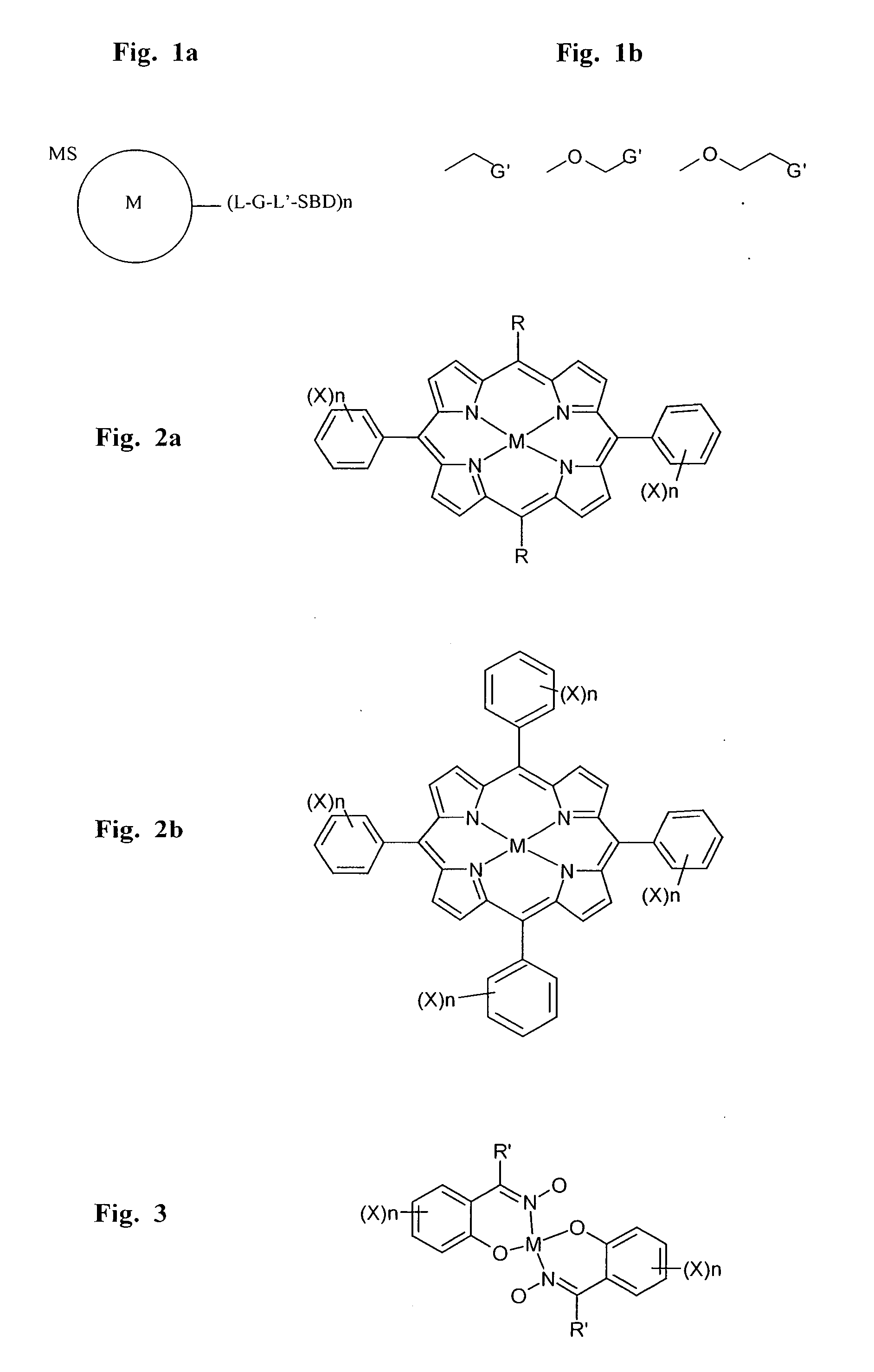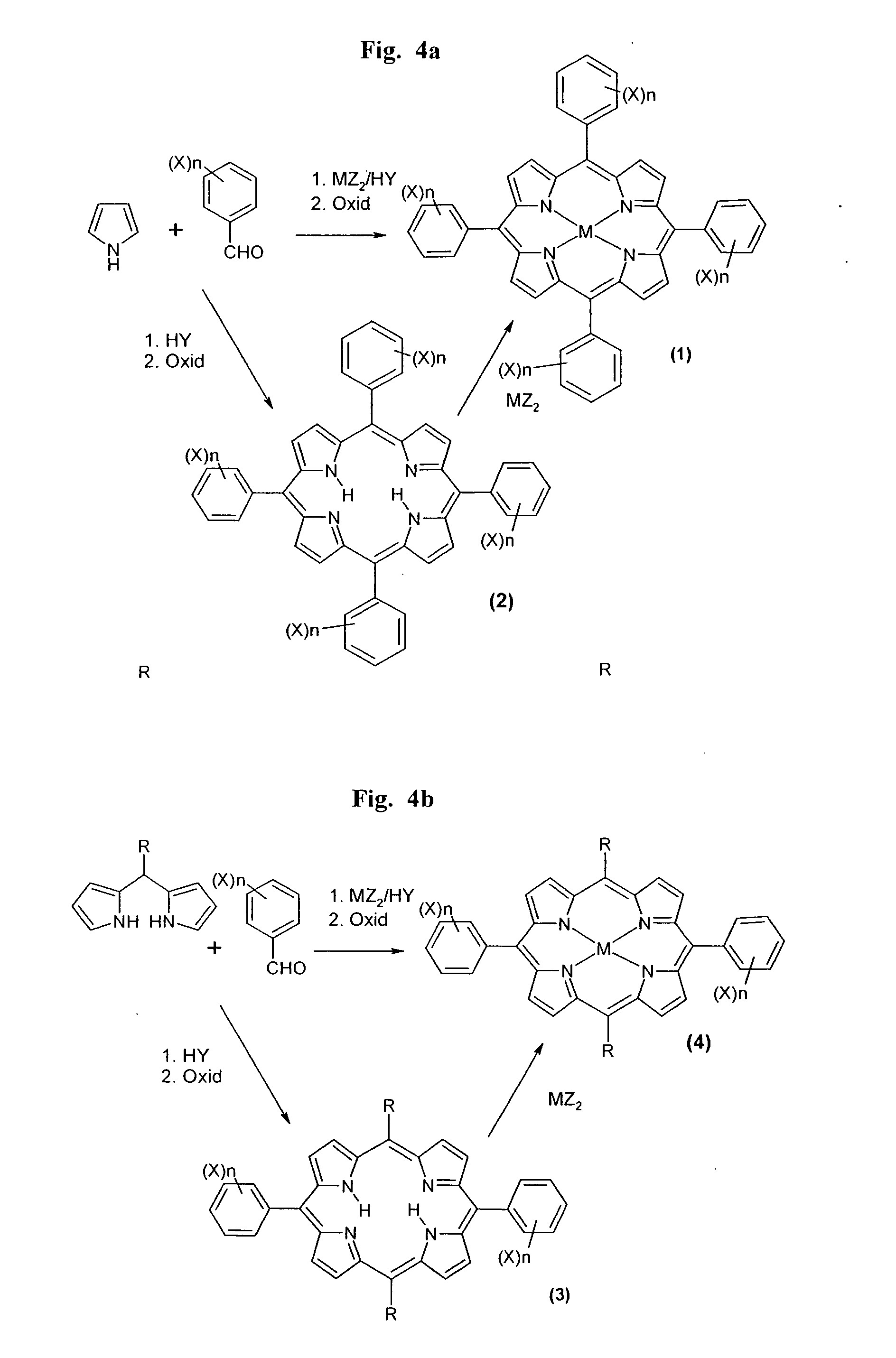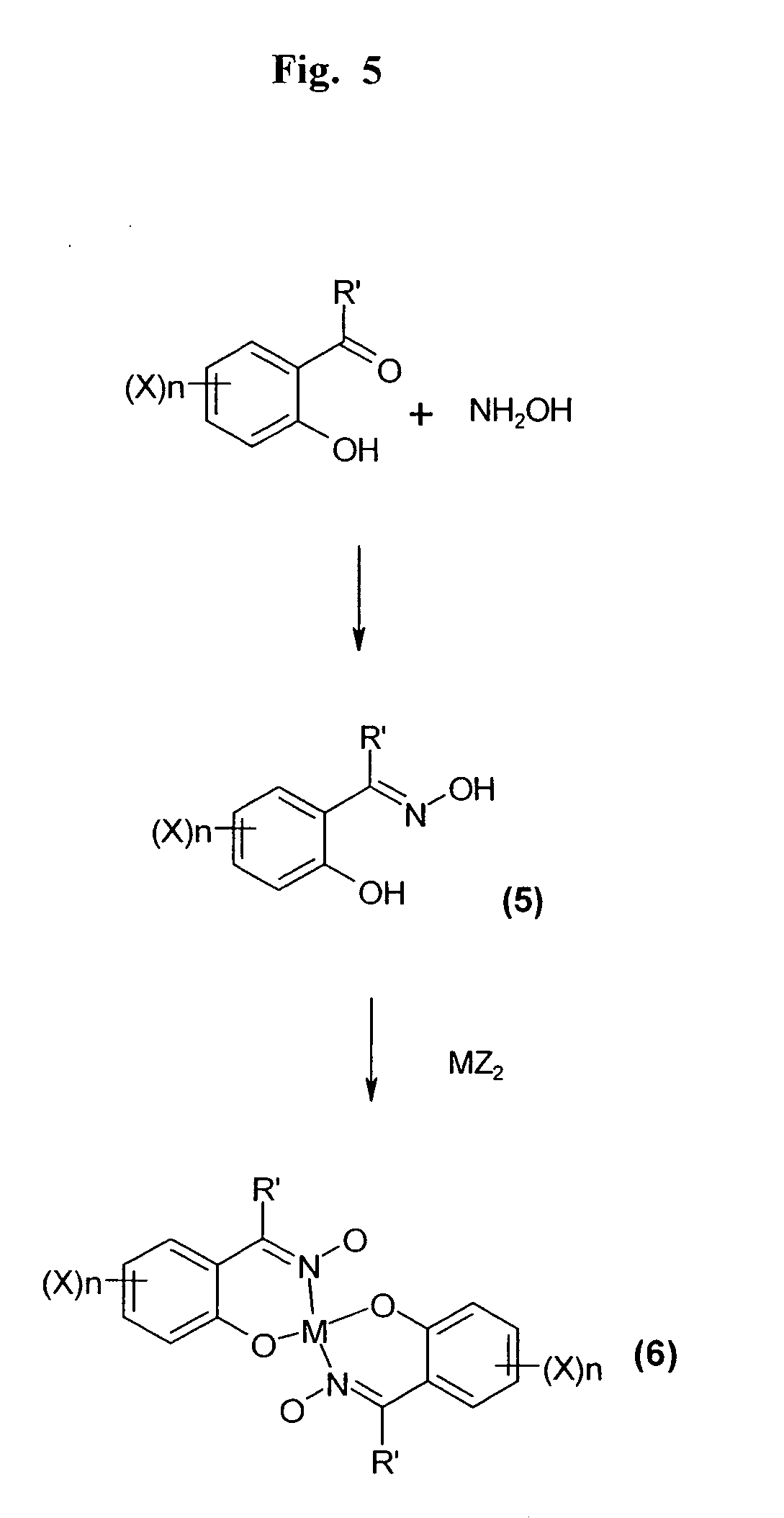Molecular linkers suitable for crystallization and structural analysis of molecules of interest, method of using same, and methods of purifying g protein-coupled receptors
a technology of molecular linkers and crystallization, which is applied in the field of molecular linkers, can solve the problems of requiring large amounts of pure protein, high cost, and high time-consuming to achieve the effect of crystallizing the molecular complex and facilitating the homomultimerization of the polypeptid
- Summary
- Abstract
- Description
- Claims
- Application Information
AI Technical Summary
Benefits of technology
Problems solved by technology
Method used
Image
Examples
example 1
Generation of Ordered Crystals of Molecules of Interest by Complexation Thereof with Non-Polypeptidic Molecular Linkers
[0327] In order to facilitate ordered crystallization and atomic structure determination of a molecule-of-interest, non-polypeptidic molecular linkers were designed having the capacity to form a crystallizable molecular complex with molecules of a molecule-of-interest and, preferably, with a metal atom.
[0328] Materials and Methods:
[0329] Molecular linkers are generated to facilitate ordered crystallization of molecules-of-interest having the following characteristics: (a) the ability to homomultimerize molecules-of-interest in selected geometric configurations, thereby facilitating ordered crystallization of molecules-of-interest which do not naturally aggregate in configurations suitable therefor; (b) sufficient conformational rigidity so as to facilitate ordered crystallization or ordered assembly of molecules-of-interest lacking sufficient conformational rigid...
example 2
Chemical Synthesis of Porphyrin-Based Molecular Linkers
[0334] As described in Example 1, porphyrin-based molecular linkers can be employed to facilitate crystallization of molecules of interest by multimerizing these within substantially conformationally rigid and / or hydrophobic crystallizable molecular complexes. Such linkers further facilitate determination of the atomic structure of molecules of interest by incorporating a platinum atom which can be employed to generate initial phases during X-ray crystallographic analysis of crystals of such molecular complexes.
[0335] Synthetic procedures to generate crystallizable molecular complexes with porphyrin-based molecular linkers are depicted in FIGS. 4a and 4b.
[0336] The steps involved in synthetic processes to generate a porphyrin-based molecular linker, 5,15-Di(2,6-di(ethoxycarbonymethoxy))porphyrinato-platinum (FIG. 4b, Product No. 4), and the attachment of various molecular spacers / binding domains thereto are outlined below:
[0...
example 3
Chemical Synthesis of a Hydroxime-Based Molecular Linker
[0343] A synthetic procedure to generate a hydroxime-based molecular linker for binding two molecules of a molecule-of-interest, thereby generating a crystallizable molecular complex containing the molecule-of-interest, is depicted in FIG. 5. Such a molecular linker further facilitates determination of the crystal structure of the molecule-of-interest by chelating a copper atom which is employed to generate initial phases during X-ray crystallographic analysis of a crystal of the molecular complex.
[0344] Materials and Methods:
[0345] Synthesis of 5-((2-trimethylammonium-ethoxy)digolyloxycarbonyl)-2-hydroxyacetophenone oxime dichloride (intermediate No. 5 where X=CO.(OCH2CH2)3N+Me3, R′=Me, n=1): 5-Carboxy-2-hydroxyacetophenone oxime (1 g, 6 mmol) was dissolved in dioxane (50 ml) containing DCC (0.95 g) and (2-trimethylammonium-ethoxy)-digol chloride (1.4 g) dissolved in dioxane (20 ml) and the mixture was stirred for 6 hours a...
PUM
| Property | Measurement | Unit |
|---|---|---|
| Hydrophilicity | aaaaa | aaaaa |
| Affinity | aaaaa | aaaaa |
| Crystallization enthalpy | aaaaa | aaaaa |
Abstract
Description
Claims
Application Information
 Login to View More
Login to View More - R&D
- Intellectual Property
- Life Sciences
- Materials
- Tech Scout
- Unparalleled Data Quality
- Higher Quality Content
- 60% Fewer Hallucinations
Browse by: Latest US Patents, China's latest patents, Technical Efficacy Thesaurus, Application Domain, Technology Topic, Popular Technical Reports.
© 2025 PatSnap. All rights reserved.Legal|Privacy policy|Modern Slavery Act Transparency Statement|Sitemap|About US| Contact US: help@patsnap.com



